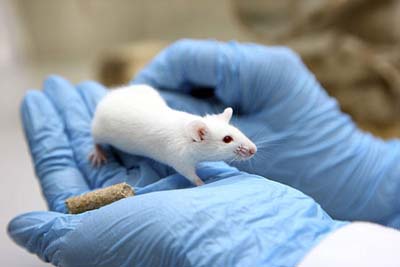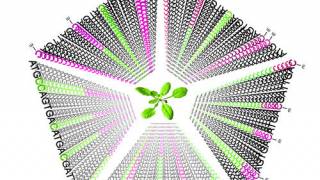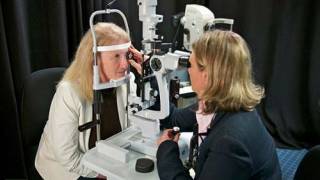Blind Mice Given Sight After Device Cracks Retinal Code
Source: bloomberg.com

Blind mice had their vision restored with a device that helped diseased retinas send signals to the brain, according to a study that may lead to new prosthetic technology for millions of sight-impaired people.
Current devices are limited in the aid they provide to people with degenerative diseases of the retina, the part of the eye that converts light into electrical impulses to the brain. In research described today in the Proceedings of the National Academy of Sciences, scientists cracked the code the retina uses to communicate with the brain.
The technology moves prosthetics beyond bright light and high-contrast recognition and may be adopted for human use within a year or two, said Sheila Nirenberg, a neuroscientist at Weill Cornell Medical College in New York and the study’s lead author.
“What this shows is that we have the essential ingredients to make a very effective prosthetic,” Nirenberg said. Researchers haven’t yet tested the approach on humans, though have assembled the code for monkeys, she said.
Once the researchers determined the code the mouse retina used to communicate with the brain, they were able to mimic it with electric-signal sending glasses, Nirenberg said. Previous prosthetics have used less-specific stimulation and proved inherently limited as a result, she said.
About 20 million people worldwide are blind or facing blindness due to retinal degenerative diseases, such as macular degeneration and retinitis pigmentosa. The disorders cause a progressive loss of the retina’s input cells, or photoreceptors.
Visual Equations
Nirenberg and co-author Chethan Pandarinath first monitored healthy eyes to determine the set of equations that translate light received by the retina into something the brain can understand. Then, they used special glasses to create a similar code and deliver it to the eye, which had been engineered to contain light-sensitive proteins. The cells received the code through the light sensitive proteins and fired electric impulses, which the brain could interpret as images.
Nirenberg’s research “is basically giving vision back to a system that doesn’t work,” said Aude Oliva, a principal investigator at the Massachusetts Institute of Technology’s Computer Science and Artificial Intelligence Laboratory in Cambridge, Massachusetts, who wasn’t involved in the research. “I’ve never seen, and other people have never seen, this quality.”

No foreseeable barriers should stop the movement into humans now that the technology has been created, Oliva said. Nirenberg said that if researchers can come up with adequate cash to fund clinical trials, she hopes to soon adapt the technology.
Macular degeneration is the leading cause of blindness in people older than 55 in the western world and may triple in incidence by 2025 according to a 2009 report by the American Optometric Society. Retinal diseases could find a “reasonable solution” in the technology, said Jonathan Victor, a professor in the department of neurology and neuroscience at Weill who was familiar with, but not involved in the research.
“It’s a major step, it’s elegant, and it works,” he said.
Article from: bloomberg.com






















